Name Isabel Moctezuma Children Leonor Cortes Moctezuma Parents Moctezuma II | Died December 9, 1550 Cousins Maria Bartola | |
 | ||
Grandchildren Isabel de Tolosa Cortes de Moctezuma Similar People Moctezuma II, Leonor Cortes Moctezuma, Cuitlahuac, Axayacatl, Hernan Cortes | ||
Isabel Moctezuma "Tecuichpo".
Doña Isabel Moctezuma (born Tecuichpoch Ixcaxochitzin; 1509/1510 – 1550/1551) was a daughter of the Aztec ruler Moctezuma II. She was the consort of the Aztec emperors Cuitláhuac and Cuauhtémoc and as such the last Aztec empress. After the Spanish conquest, Doña Isabel was recognized as Moctezuma's legitimate heir, and became one of the Mexican Indians granted an encomienda. Among the others were her half-sister Marina (or Leonor) Moctezuma, and Juan Sánchez, an Indian governor in Oaxaca.
Contents
- Isabel Moctezuma Tecuichpo
- Family and early marriages
- Doa Isabel and the conquest of Tenochtitlan
- Conversion to Christianity and marriage to a Spaniard
- Corts a child and two more marriages
- Death and inheritance
- Importance
- References
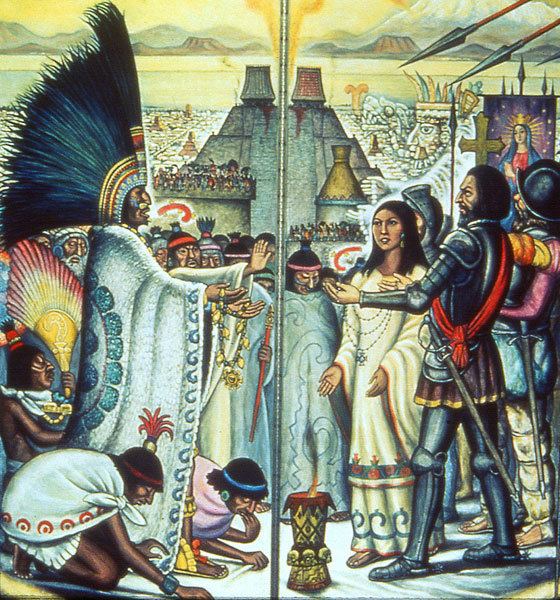
Doña Isabel was married to three Aztec emperors and three Spaniards and widowed five times. She had a daughter out of wedlock, Leonor Cortés Moctezuma, with conquistador Hernán Cortés. Her sons founded a line of Spanish nobility. The title of Duke of Moctezuma de Tultengo still exists.
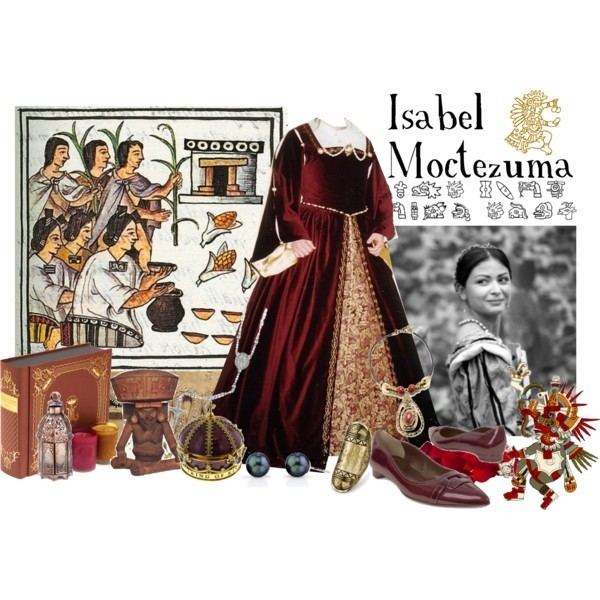
Family and early marriages
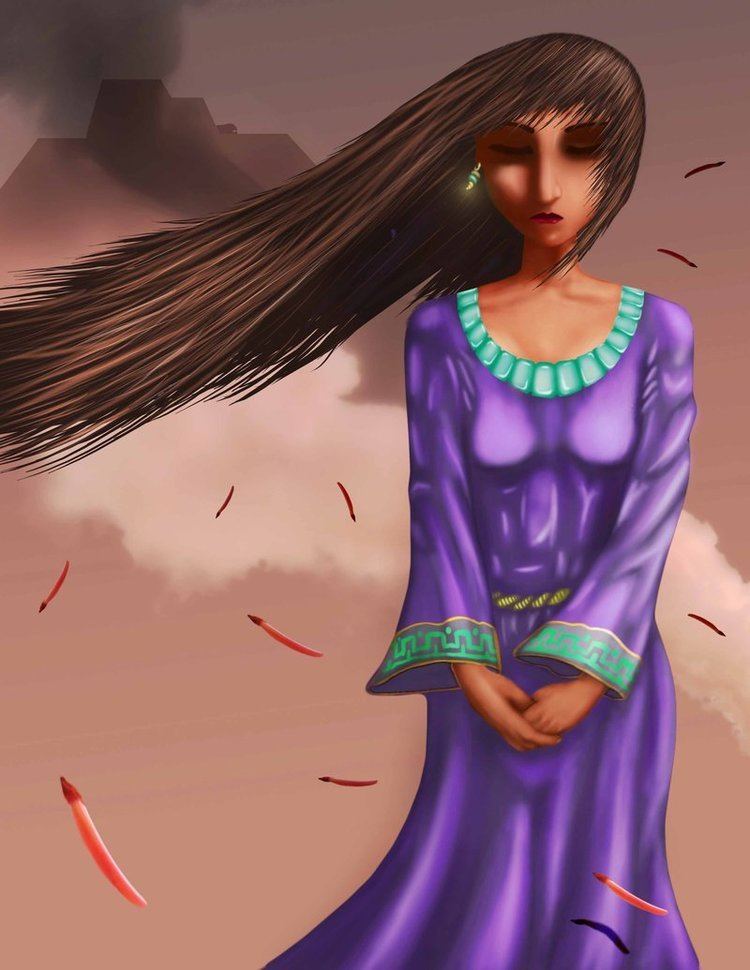
Doña Isabel's mother was Princess Teotlalco and her birth name was Tecuich(po)tzin, translated as "lord's daughter" in Nahuatl. Teotlalco was Moctezuma's principal wife and, thus, among Moctezuma's daughters Tecuichpotzin had primacy. As a small child, Tecuichpotzin was married to Atlixcatzin, who died by 1520. After her father was killed, either by his own people or the Spanish, she was quickly married to her uncle Cuitláhuac who became emperor after Moctezuma's death. Cuitláhuac died of smallpox after only sixty days of rule and Cuauhtémoc became emperor and married Tecuichpotzin. She was only about eleven or twelve years old at the time of her third marriage.
Doña Isabel and the conquest of Tenochtitlan
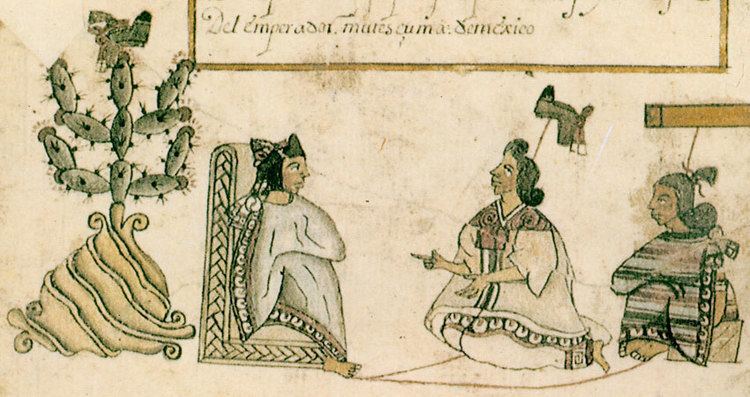
Hernán Cortés and other Spanish conquerors entered Tenochtitlan on November 8, 1519, and quickly took Moctezuma as a hostage, leading to his death either at the hands of the Spanish or his own people.
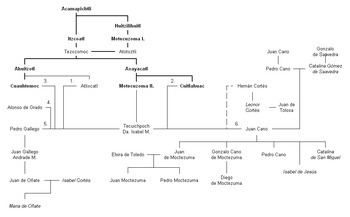
When the Aztecs revolted and expelled Cortés and his army from Tenochtitlan (La Noche Triste, June 30, 1520), Tecuichpotzin was left behind in the city by the Spanish. Aztec leaders quickly married her to Cuitláhuac, the new emperor, and, after he died of smallpox, to Cuauhtémoc.
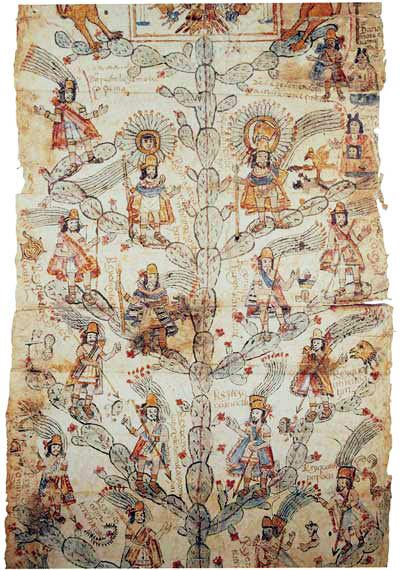
Cortés returned in 1521 with a large group of Spaniards and Indian allies, mostly from Tlaxcala, to attack Tenochtitlan. The Aztecs, their numbers and morale depleted by a smallpox epidemic, were defeated. Cuauhtémoc and his court attempted to flee Tenochtitlan by boat, but they were captured by the Spanish. On surrendering, Cuauhtémoc asked the Spanish to respect the ladies of his court, including his young wife Tecuichpotzin.
In 1525, Cortés executed Cuauhtemoc and Tecuichpotzin was widowed for the third time.
Conversion to Christianity and marriage to a Spaniard
Cortés valued Tecuichpotzin as a symbol of what he wished to portray as the continuity of rule between the Aztecs and the Spanish. She was instructed in Christianity, converted to Catholicism, probably in 1526, and baptized as Isabel, the name by which she would thereafter be known. Every indication is that Doña Isabel, the former Aztec princess Tecuichpotzin, was devout in her new religion. She gave generously in alms to the Augustinians, to the point that she was asked to stop. Isabel’s education as a Christian did not include teaching her to read and she remained illiterate.
Cortés arranged the marriage of Doña Isabel to his close colleague Alonso de Grado in June 1526. Part of the marriage arrangement was the granting of a large encomienda to Doña Isabel. The encomienda consisted of the city of Tacuba (about eight kilometres or five miles) west of Tenochitlan (now called Mexico City) and was the largest encomienda in the Valley of Mexico, an indicator of the importance Cortés gave to Isabel. The encomienda of Doña Isabel endured for centuries. The Spanish and, later, Mexican governments, paid royalties in the form of a pension to the descendants of Doña Isabel until 1933 and a Count of Miravalle, the descendants of Moctezuma, still exists in Spain.
Cortés, a child, and two more marriages
Doña Isabel was described as “very beautiful” and “a very pretty woman for an Indian.” Her fourth husband, Alonso de Grado, soon died and Isabel, about seventeen years old, was widowed for a fourth time. Cortes took her into his household and she soon became pregnant. He quickly married her to another associate, Pedro Gallego de Andrade, and the child, christened Leonor Cortés Moctezuma (Isabel also had a half-sister named Marina or Leonor Moctezuma) was born a few months later. According to Spanish sources, she refused to recognize the child, who was placed in the care of Juan Gutierrez de Altamirano, another close associate of Cortés. Cortés however accepted the child as his own and ensured that she was brought up well and received an inheritance from his and Doña Isabel’s estate. Isabel’s marriage to Gallego produced a son, Juan de Andrade Gallego Moctezuma, born in 1530. However, Gallego died shortly thereafter. In 1532 she married her sixth husband, Juan Cano de Saavedra, by whom she had three sons and two daughters: Pedro, Gonzalo, Juan, Isabel, and Catalina Cano de Moctezuma. Isabel and Catalina became nuns at the first convent in the Americas, El Convento de la Conception de la Madre de Dios. Both daughters were well-educated, as presumably were her sons.
Death and inheritance
Doña Isabel died in 1550 or 1551. Her estate was large, consisting not only of the encomienda, but also personal possessions she had acquired during her marriages with the Spaniards. Previous to those marriages, she had been an Aztec princess who owned nothing except her distinguished name. Her will is one of the few existing indicators of her personality. She directed that her Indian slaves be set free, one-fifth of the estate be given to the Catholic Church, and that all her outstanding debts, including wages owed to servants, be paid. She had acquired jewelry and other luxury items and requested that many of these be given to her daughters, and that other property be sold and one-third of the proceeds go to her daughters. As a deathbed wish, 20 percent of her estate was to be given to Leonor, her out-of-wedlock child by Cortés. This was apparently a dowry, as Leonor was married, or soon to be married, to Juan de Tolosa in Zacatecas.
Isabel willed the majority of her encomienda to her eldest son, Juan de Andrade, but his inheritance of her encomienda was disputed by her widower, Juan Cano, and Diego Arias de Sotelo, son-in-law of Leonor (Mariana) Moctezuma, whom he claimed was Moctezuma's true heir. The result after years of litigation was that Arias de Sotelo's claim was dismissed, and Tacuba was divided between Cano and Andrade.
The Miravalle line of Spanish nobility began with Isabel's son, Juan de Andrade. Her sons, Pedro and Gonzalo Cano, became prominent citizens of Mexico City. Her son, Juan Cano Moctezuma, married into a prominent family in Cáceres, Spain, where the Palacio de Toledo-Moctezuma still exists. Isabel's last husband, Juan Cano, died in Seville in 1572.
Importance
Very little is known about Doña Isabel beyond a few facts of her life. She seems to have been more than a mere pawn in the hands of Aztec royalty and Spanish conquerors. Her will reveals her to have been a decisive and strong woman who was generous and thoughtful. She seems to have made the transition from Aztec princess to Spanish doña successfully. Her descendants were the most prominent example of her day of mestizaje – melding Spanish and Indian ancestries – that would characterize the future of Mexico. The Spanish wished to inculcate in the Indians "the economic, religious, and cultural orientation of Spain." Isabel, whether by desire or necessity, was the first great success of the assimilation of Spanish and Indian.
